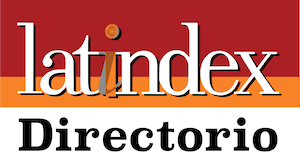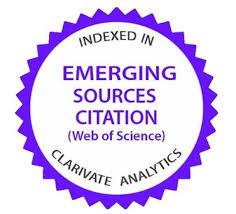Debate in modern theories of regional growth
DOI:
https://doi.org/10.35197/rx.10.03.e2.2014.14.adKeywords:
solow model, keynesian model, neoclassical growth model, new growth theory, economic geography, economies of agglomeration, real business cycle modelsAbstract
How can we explain the differences in economic growth across regions of the country and the world over the past sixty years?
The aim of this study is to review the traditional literature on the main models of regional economic growth. The literature on regional economic growth offers several answers in neoclassical models, as well as in endogenous models that emphasize capital accumulation through externalities, learning and human capital, and endogenous technological progress. The study focuses on the empirical debate and recent theories of regional economic growth.
Downloads
References
Akerlof, G. A. (1971). The Market for Lemons, Quarterly Journal of Economics.
Akerlof, G. A. and Yellen, J. L. (1985a). Can Small Deviations from Rationality Make Significant Differences to Economic Equilibria?, American Economic Review, 75(4): 708-720.
Akerlof, G. A. and Yellen, J. L. (1985b). A Near-Rational Model of the Business Cycle, with Wage and Price Inertia, The Quarterly Journal of Economics, 100(Supplement): 823-838.
Barro, R. J. (1991). Economic Growth in a Cross Section of Countries, Quarterly Journal of Economcis, 106(2): 407-443.
Barro, R J. and Lee, J. W. (1993a). International comparisons of educational attainment, Journal of Monetary Economics, 32: 363-94.
Barro, R. J. and Lee, J. W. (1993b). Losers and winners in economic growth, Proceedings of the World Bank Annual Conference on Development Economics, 1993, 267-97.
Barro, R. J. and Sala-i-Martin, X. (1995). Economic Growth. New York: McGraw-Hill.
Benhabib, J. and Spiegel, M. (1994). The role of human capital in economic development. Evidence from aggregate cross-country data, Journal of Monetary Economics, 34: 143-173.
Blanchard, O. J. (1983). Price Asynchronization and Price Level Inertia, in R. Dornbusch and M.H. Simonsen, eds., Inflation, debt, and indexation, Cambridge: MIT Press, 3-24.
Cass, D. (1965). Optimum Growth in an Aggregative Model of Capital Accumulation, Review of Economic Studies , 32 (July): 233-240.
Cross, R. (1993). Hysteresis and Post Keynesian Economics, Journal of Post Keynesian Economics, 15(3)(Spring): 305-8.
Davidson, P. (1993). The elephant and the butterfly: Or hysteresis and Post Keynesian economics,
Journal of Post Keynesian Economics, 15: 309-322.
Davidson, P. (1994). Post Keynesian Macroeconomic Theory, Aldershot: Edward Elgar.
De Long, J. B. and Summers, L. H. (1993). How Strongly do Developing Economies Benefit from Equipment Investment?, Journal of Monetary Economics, 32(3): 395-415.
Duesenberry, J. S. (1949). Income, Saving and the Theory of Consumer Behavior. Cambridge, Mass.: Harvard University Press.
Eaton, J. and Zvi, E. (1994). Cities and Growth: Theory and Evidence from France and Japan, NBER Working Paper #4612.
Grossman, G. M. and Helpman, E. (1994). Endogenous Innovation in the Theory of Growth,
Journal of Economic Perspectives, 8: 23-44.
Harrod, R. F. (1936). The Trade Cycle: An essay. (1961 reprint), New York: Augustus M. Kelley. Harrod, R. F. (1948). Towards a Dynamic Economics. London: Macmillan.
Hicks, J. R. (1949). Harrod's Dynamic Theory, Economica, 16: 106-21.
Hicks, J. R. (1950). A Contribution to the Theory of the Trade Cycle. (1956 reprint), Oxford: Clarendon.
Hicks, J. R. (1973). Capital and Time: A Neo-Austrian theory. Oxford: Clarendon. Hicks, J. R. (1985). Methods of Dynamic Economics. Oxford: Clarendon.
Jones, C. I. (1995). Time Series Test of Endogenous Growth Models, Quarterly Journal of Economics, 110(may): 495-525.
Kaldor, N. (1940). A Model of the Trade Cycle, The Economic Journal, 50(197): 78-92. Reprinted in Kaldor (1960, 148-76).
Kaldor, N. (1960). Essays on Economic Stability and Growth, 1980 edition, New York: Holmes and Meier.
Kalecki, M. (1937). A Theory of the Business Cycle, Review of Economic Studies, 4: 77-97. Keynes, J. M. (1936). The General Theory of Employment, Interest and Money. (1964 reprint), New
York: Harcourt Brace.
Koopmans, T. C. (1965). On the Concept of Optimal Economic Growth, in The Economic Approach to Development Planning. Amsterdam: North-Holland Publishing Co., 225-87.
Koopmans, T. C. (1967a). Objectives, Constraints and Outcomes in Optimal Growth Models,
Econometrica, 35: 1-15.
Koopmans, T. C. (1967b). Intertemporal Distribution and Optimal Aggregate Economic Growth, in Fellner et al., editor, Ten Economic Studies in the Tradition of Irving Fisher. Yale University, John Wiley, 95-126.
Krugman, P. (1991). Geography and Trade. MIT Press.
Krugman, P. (1995). Development, Geography, and Economic Theory, MIT Press.
Kydland, F. E. and Prescott, E. C. (1982). Time to Build and Aggregate Fluctuations,
Econometrica, 50: 1345-70.
Kydland, F. E. and Prescott, E. C. (1991). The econometrics of the General Equilibrium Approach to Bussines Cycles, Scandinavian Lournal of Economics, 93: 161-78.
Li, Tien-Yien and Yorke, J. A. (1975). Period 3 Implies Chaos, American Mathematical Monthly, 82: 985-992.
Lorenz, Edward N. (1963), Deterministic Non-Periodic Flow, Journal of Atmospheric Sciences, 20, 130-141.
Lorenz, Hans-Walter, (1992). Multiple Attractors, Complex Basin Boundaries, and Transient Motion in Deterministic Economic Systems, in G. Feichtinger, ed., Dynamic Economic Models and Optimal Control, Amsterdam: North-Holland, 411-430.
Lucas, R. E. Jr. (1972). Expectations and the Neutrality of Money, Journal of Economic Theory, 4: 103-124.
Lucas, R. E. (1988). On the mechanics of economic development, Journal of Monetary Economics, 22: 3-42.
Mankiw, N. G. (1985). Small Menu Costs and Large Business cycles: A Macroeconomic Model of Monopoly, Quarterly Journal of Economics, 100(May): 529-239.
Mankiw, N. G., Romer, D. and Weil, D. N. (1992). A Contribution to the Empirics of Economic Growth, Quarterly Journal of Economics 107(2): 407-437.
Okun, A. M. (1981). Prices and quantities: A macroeconomic analysis. Washington: Brookings Institution.
Pasinetti, L. L. (1960). Cyclical Growth and Fluctuations, Oxford Economic Papers. Phelps, E. S. (1966). Golden Rules of Economic Growth. New York: W.W. Norton.
Phelps, E. S. (1966). Models of Technical Progress and the Golden Rule of Research, Review of Economic Studies, 33(April): 133-145.
Ramsey, F. (1928). A Mathematical Theory of Saving, The Economic Journal, 38: 543-559. Rebelo, S. (2005). Real Business Cycle Models: Past, Present and Future, National Bureau of
Economic Research, NBER working paper 11401, June.
Romer, P. M. (1986). Increasing Returns and Long-Run Growth, The Journal of Political Economy, 94(5): 1002-1037.
Romer, P. M. (1990a). Endogenous technical change, The Journal of Political Economy, 98: S71- S102.
Romer, P. M. (1990b). Human capital and growth: theory and evidence, Carnegie-Rochester Conference Series on Public Policy, 32, 251-86.
Romer, P. M. (1993). Idea Gaps and Object Gaps in Economic Development, Journal of Monetary Economics, 32(3): 543-573.
Romer, P. M. (1994). The Origins of Endogenous Growth, Journal of Economic Perspectives, 8(1) (Winter): 3-22.
Rosser, J. Barkley, Jr. (1990). Chaos Theory and the New Keynesian Economics, The Manchester School of Economic and Social Studies, 58: 265-291.
Sala-i-Martin, X. (1996). The classical approach to convergence analysis, The Economic Journal, 106: 1019-1036.
Samuelson, P. A. (1939a). Interaction Between the Multiplier Analysis and the Principle of Acceleration, Review of Economics and Statistics, 21(2): 75-8.
Samuelson, P. A. (1939b). A Synthesis of the Principle of Acceleration and the Multiplier, The Journal of Political Economy, 47: 786-797.
Shapiro, C. and Stiglitz, J. E. (1984). Equilibrium Unemployment as a Worker Discipline Device,
American Economic Review, 74: 433-444.
Solow, R. (1956). A Contribution to the Theory of Economic Growth, Quarterly Journal of Economics, 70(1): 65-94.
Swan, T. W. (1956). Economic Growth and Capital Accumulation, Economic Record, 32(November): 334-361.
Von Neumann, J. (1937). A Model of General Economic Equilibrium, in K. Menger, ed., Ergebnisse eines mathematischen Kolloquiums, 1935-36. (Translated and reprinted in RES, 1945).
Williamson, J. G. (1980). Unbalanced Growth, Inequality, and Regional Development: Some Lessons from U.S. History. Alternatives to Confrontation, in V. L. Arnold, ed., Alternatives to Confrontation: A National Policy Towards Regional Change, Lexington, Mass.: D.C. Heath Restructuring of Production and Labor Systems, 3-62.
Young, A. (1992). A tale of two cities: factor accumulation and technical change in Hong Kong and Singapore, in O. J. Blanchard, and S. Fischer, eds., NBER Macroeconomics Annual 1992, Volume 7, 13-64.
Young, A. (1995). The tyranny of numbers: confronting the statistical realities of the East Asian growth experience, Quarterly Journal of Economics, 110: 641-80.
Downloads
Published
How to Cite
Issue
Section
License
Copyright (c) 2014 Alejandro Díaz Bautista, Salvador González Andrade

This work is licensed under a Creative Commons Attribution-NonCommercial 4.0 International License.
Usted es libre de:
- Compartir — copiar y redistribuir el material en cualquier medio o formato
- Adaptar — remezclar, transformar y construir a partir del material
- La licenciante no puede revocar estas libertades en tanto usted siga los términos de la licencia
Bajo los siguientes términos:
- Atribución — Usted debe dar crédito de manera adecuada , brindar un enlace a la licencia, e indicar si se han realizado cambios . Puede hacerlo en cualquier forma razonable, pero no de forma tal que sugiera que usted o su uso tienen el apoyo de la licenciante.
- NoComercial — Usted no puede hacer uso del material con propósitos comerciales .
- No hay restricciones adicionales — No puede aplicar términos legales ni medidas tecnológicas que restrinjan legalmente a otras a hacer cualquier uso permitido por la licencia.








